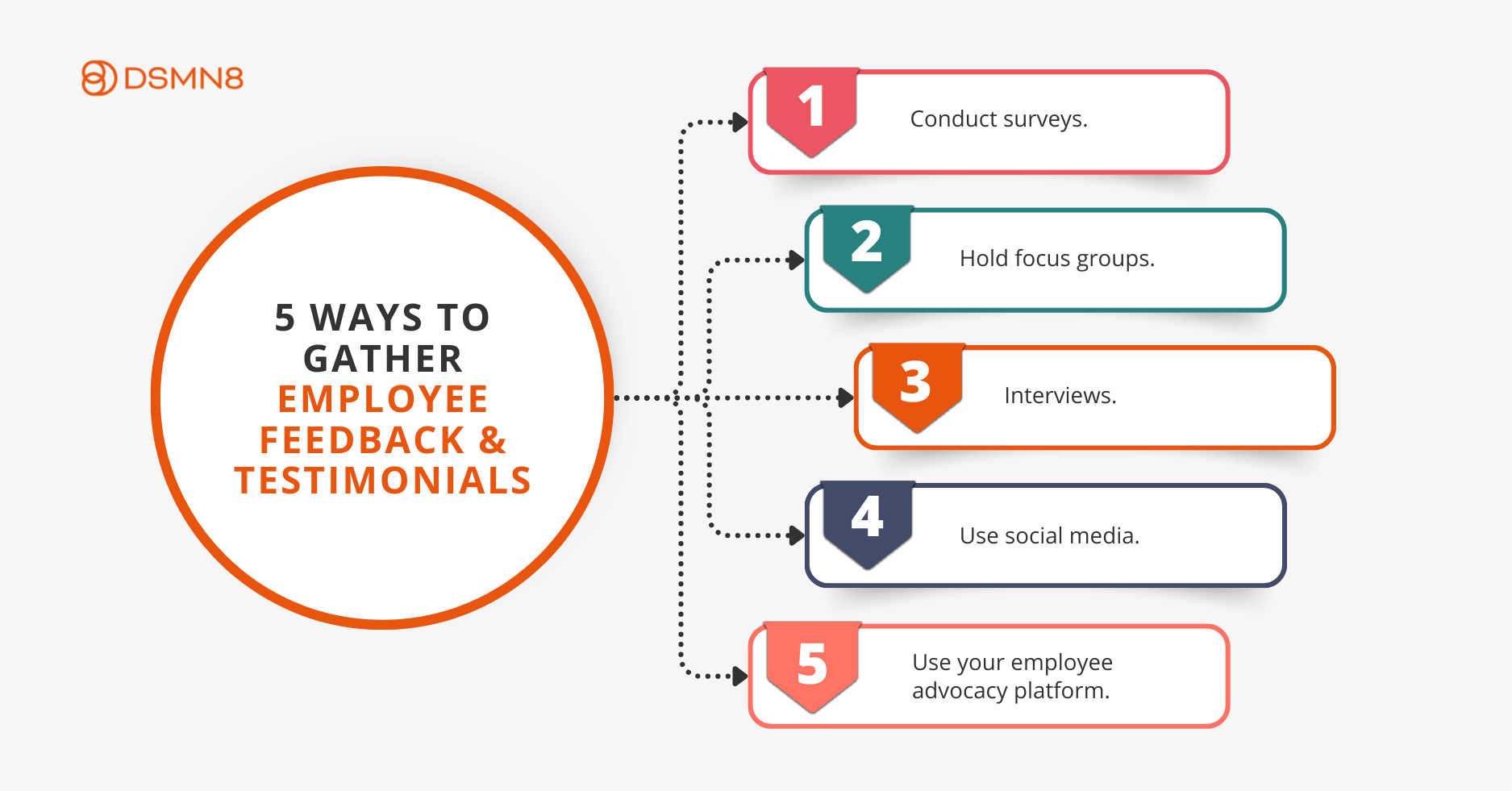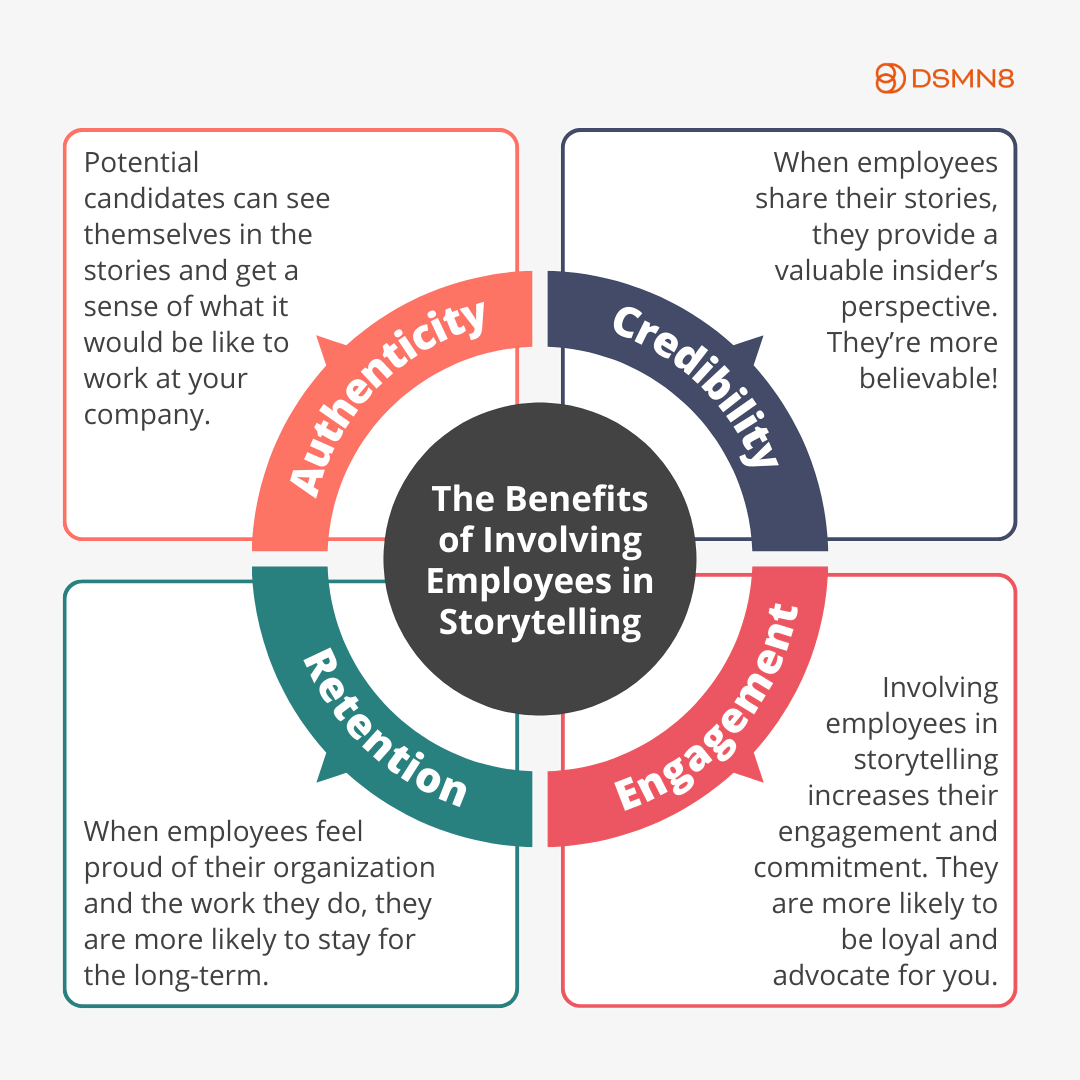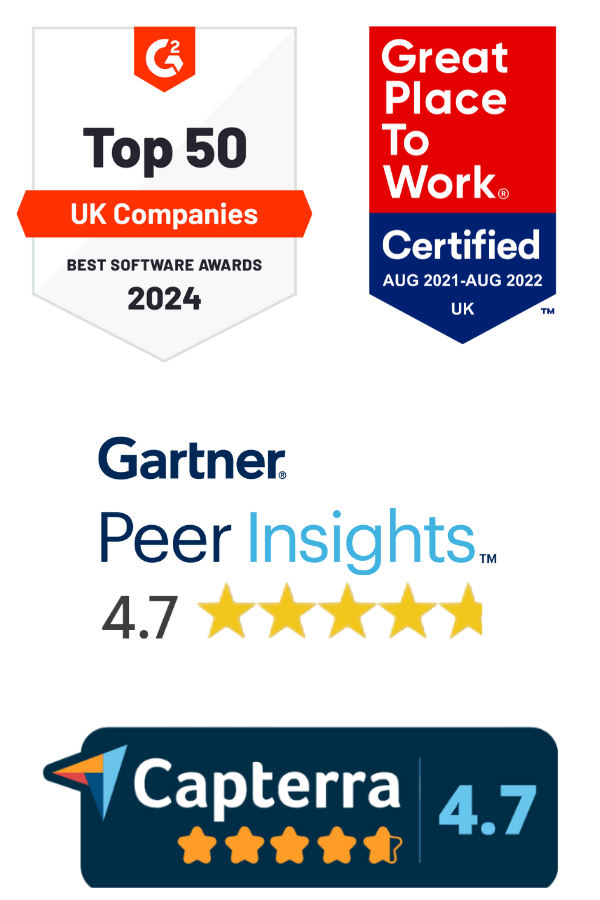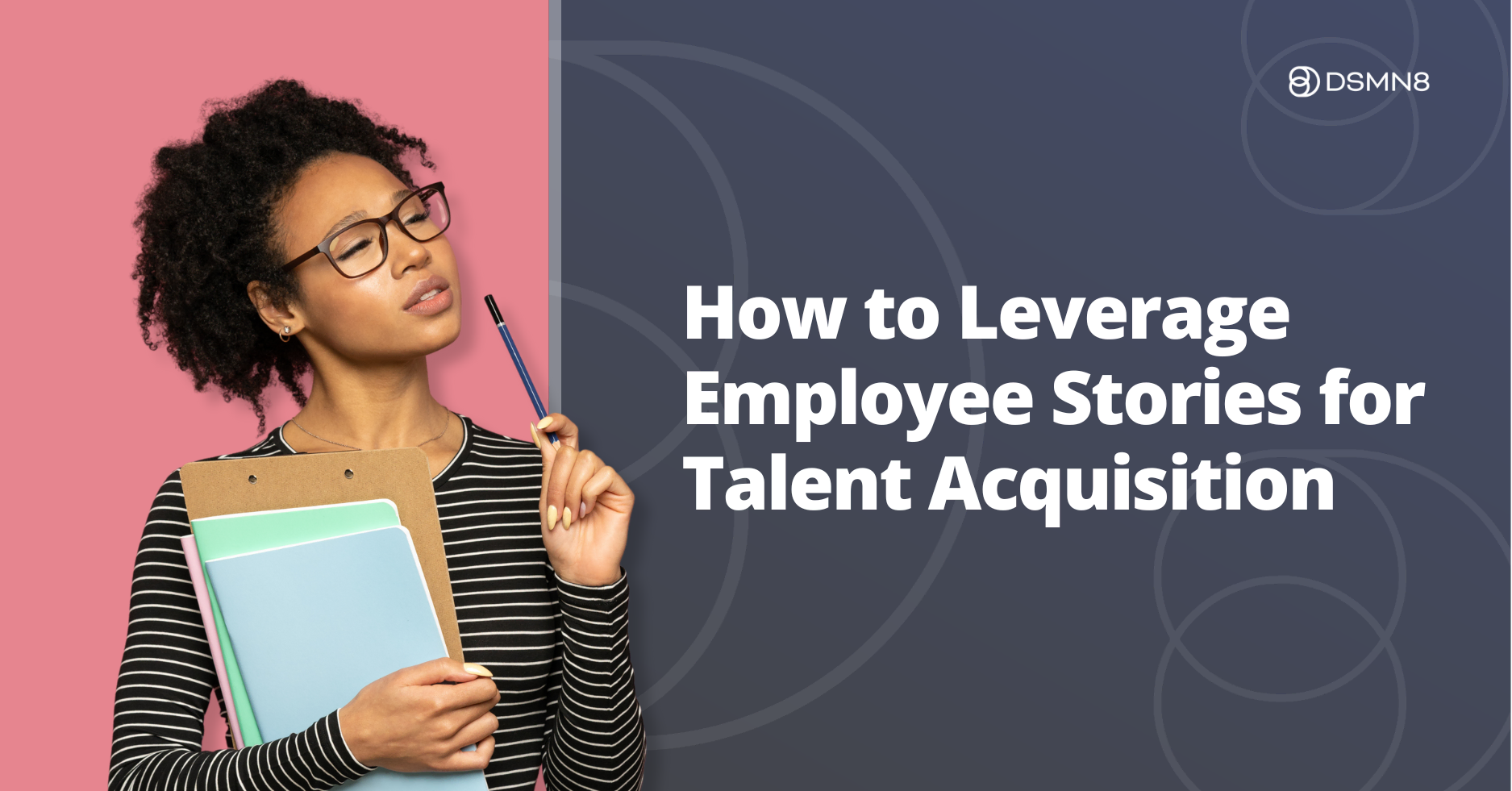
What's on this page:
- Why Storytelling Is Important For Talent Acquisition
- The Impact of Employee Stories on Employer Branding
- Identifying Employee Stories to Use in Talent Acquisition
- The Benefits of Involving Employees in Storytelling
- Crafting Employee Stories for Talent Acquisition
- Where To Distribute Employee Stories
- How to Measure the Impact of Employee Stories on Talent Acquisition
- Additional Resources
Employee stories are an incredible way to use employer branding to reach top talent in your industry.
Today you’ll learn how to leverage employee stories for talent acquisition and recruitment success.
Everything from how to discover the best employee success stories in your company, ways to share them, to tracking the results.
Let’s get started! 👇
Why Storytelling Is Important For Talent Acquisition
Planning a recruitment drive and wondering how to strengthen your employer brand?
It starts with communicating your company culture in a way that resonates. And nothing does that better than storytelling.
Not just your company’s story, but your employees’ stories.
Here’s why:
✅ Stories are emotionally engaging
✅ People trust people
Put those together and you get compelling employee stories. They’re relatable, memorable, and inspiring.
Employees give your company a human face (or many). Their real experiences highlight what makes your workplace different.
If you want to stand out from competitors, show candidates what they actually care about:
The day-to-day wins, growth, and culture through the eyes of your people.
Best of all, this doesn’t just attract talent. It builds lasting connections that strengthen retention, too 🙌
In short, storytelling is one of the most powerful tools in your talent acquisition and employer branding toolkit. And it works in every industry.
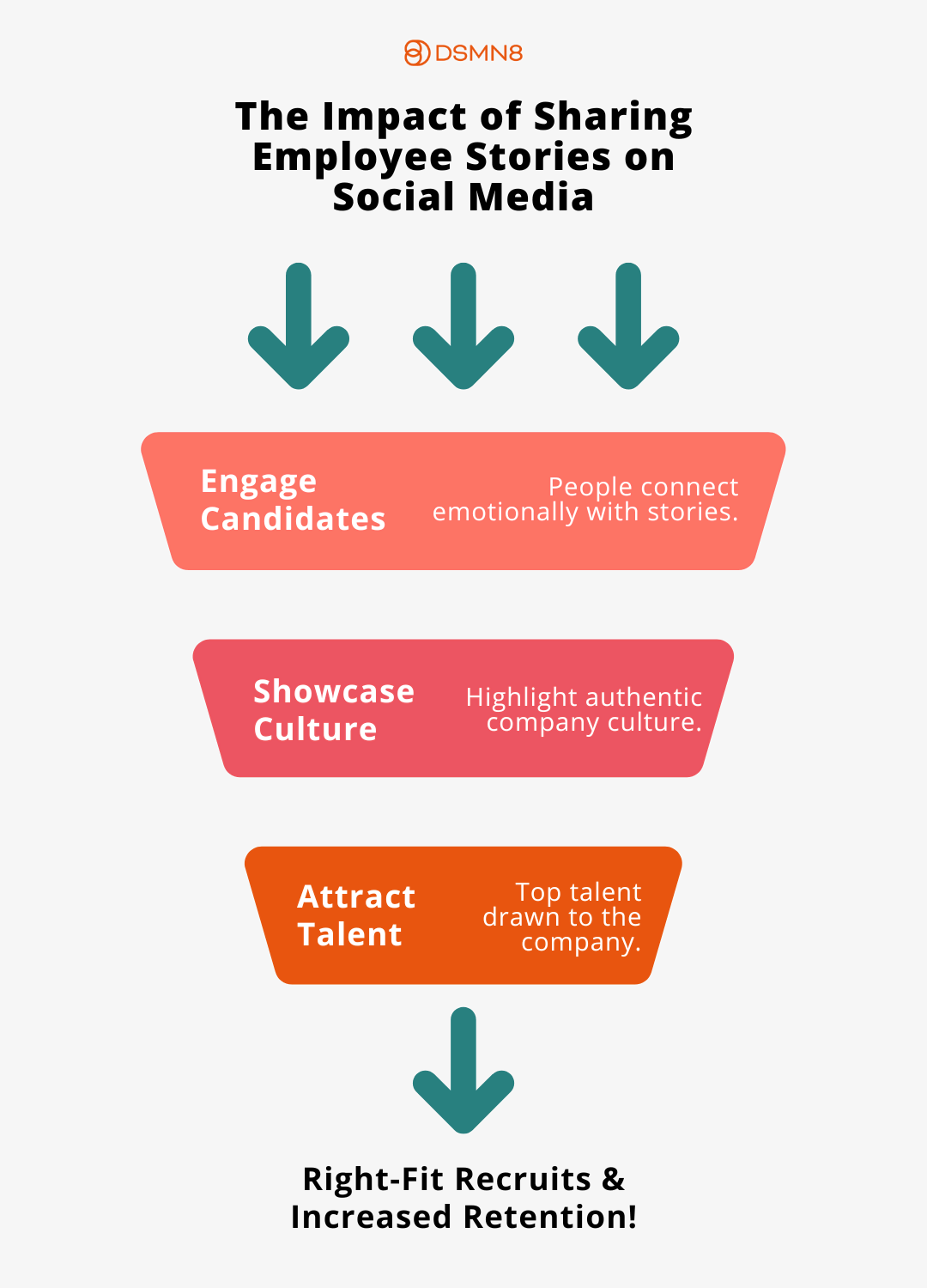
The Impact of Employee Stories on Employer Branding
I touched on employer branding above, but let’s dive deeper 🤿
Why are employee stories so important for employer branding?
Well, employer branding is all about showcasing company culture.
Who makes that company culture? Employees.
By highlighting employee experiences and successes, employers can curate a powerful narrative.
When candidates see content from employees, they’re much more likely to trust the company.
In fact, 76% of people trust content from individuals over brands 🤯
So if you’re trying to attract the best candidates in your industry…
You need to emphasize that your company values employees and invests in their personal growth and career development.
Top candidates are looking for more than “just a job”. We all want to be part of something meaningful and rewarding.
In short, your employer brand is how you position your company as a great place to work. Build trust by showing what it’s like to work at your company.
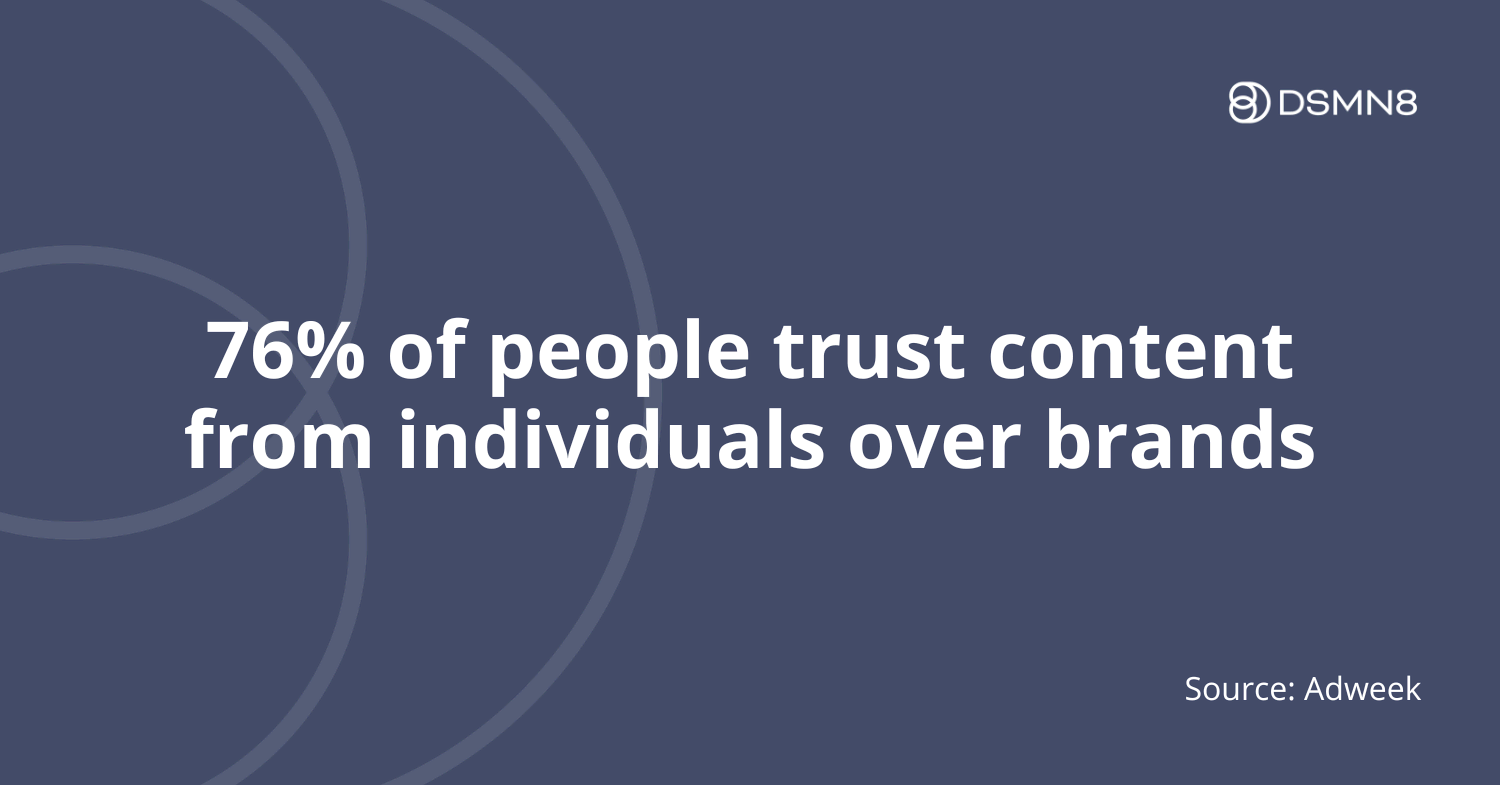
Identifying Employee Stories to Use in Talent Acquisition Campaigns
OK, so employee stories are ideal for talent acquisition and employer branding.
But how can I find employee stories to share? 😫
Here are a few things to keep in mind, and the best methods to use:
How to Find the Most Compelling Employee Stories to Share on Social Media
First, it’s essential to look for stories that align with your company’s values and goals. Emphasize what makes your company stand out from your competitors.
They’re the kind of stories that make you think: “Wow, I want to work for this company!”
The key is to gather stories that demonstrate employee growth and career development.
Share the story of an Account Executive who started as an SDR, or the Engineering Apprentice who now leads a whole team.
These stories show that your company invests in employee careers. Opportunities for promotion are always attractive! 👀
Talk to employees. It sounds obvious, but make sure not to skip this step! Getting employee perspectives ensures that you accurately represent their experiences.
Besides, employees know each other. They might recommend the perfect candidate for an employee spotlight feature.
A great place to start is by gathering feedback and testimonials.
Unless you work in a small company, you’re not likely to be able to talk to everyone personally. Here’s how to streamline the process 👇
5 Ways to Gather Employee Testimonials and Feedback
1. Conduct Surveys ✅
Surveys are an excellent way to gather feedback from employees about their experiences working for your company.
Ask them about their career path and how their values align with company values.
2. Hold Focus Groups 🙋🏾♀️
Focus groups are an effective way to gain insights in a more personal setting.
In a focus group, a small group of employees can discuss their experiences and give you quotable testimonials.
3. Interviews 🎙
Conduct interviews with individual employees to learn about their career journey in your company.
Find out how your organization helps support their goals. You can do this in person, over the phone, or via video call.
4. Use Social Media 💬
Social media platforms, especially LinkedIn, are a goldmine for understanding employee perspectives.
Use social media to find out who your employee influencers are.
These employees are engaged and much more likely to agree to an employee story feature.
5. Use Your Employee Advocacy Platform 👩🏻💻
If your company uses employee advocacy software, you’re already a step ahead.
Write an internal post asking employees to nominate people they think should be highlighted. Create polls. Use leaderboards to see who is the most active on social.
The Benefits of Involving Employees in Storytelling
I know we’re focusing on talent acquisition…
But if you need leadership buy-in before leading focus groups and sending out surveys…
Here are a bunch of extra benefits you’ll see from involving employees in storytelling:
⭐️ Authenticity
When employees are involved in storytelling, the stories are more authentic and relatable. Potential candidates can see themselves in the stories and get a sense of what it would be like to work at your company.
⭐️ Credibility
Employee stories have more credibility than marketing messages or employer brand campaigns. When employees share their stories, they provide a valuable insider’s perspective. They’re more believable!
⭐️ Employee Engagement
Involving employees in storytelling increases their engagement and commitment. When employees feel valued and listened to, they are more likely to be loyal to your company, and advocate for you.
⭐️ Retention
Empowering employees to tell their stories also contributes to talent retention. When employees feel proud of their organization and the work they do, they are more likely to stay for the long-term.
Crafting Employee Stories for Social Media
Now it’s time to craft employee stories that align with your company values and goals.
Don’t just quote employee testimonials.
Especially if you work for an enterprise business with thousands of employees, you’ll need to curate all the responses you receive!
Use a deliberate, intentional approach to achieve the most effective results.
The 6 Step Process for Crafting Employee-Centered Content for Social Media👇
How to Balance Authenticity and Messaging in Employee Stories
Telling authentic employee stories humanizes your brand, enabling you to connect with talent on a deeper level.
Employee stories need to align with employer branding goals while remaining genuine.
But how can I balance authenticity with messaging?
Work with employees to craft their stories.
Provide participating employees with guidelines.
Let them know what you’re looking for. If you want to emphasize career progression or certain values, tell your team from the start!
Here’s a great example from Yana at Semrush. It really demonstrates their company culture and makes Semrush seem like a cool and fun place to work:
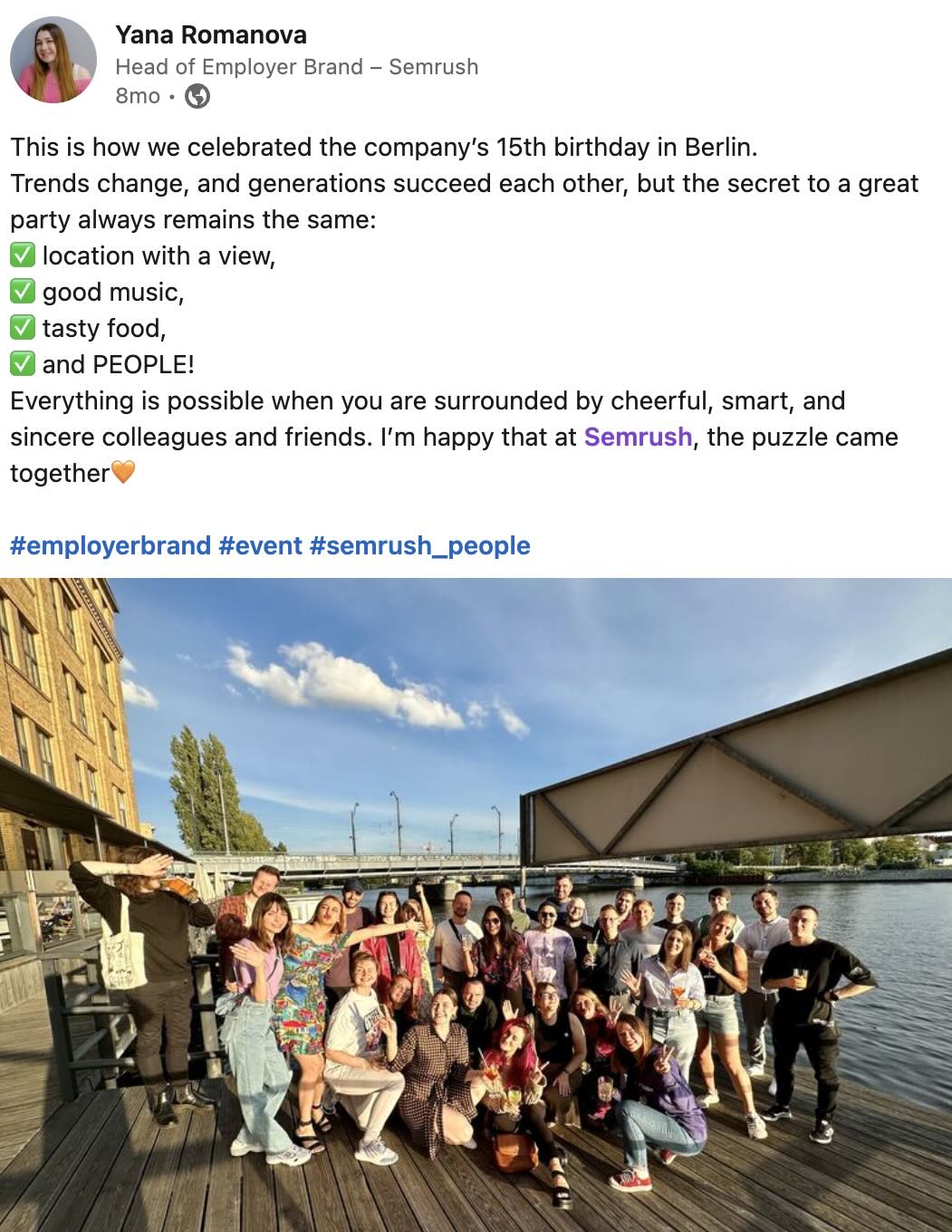
Where To Distribute Employee Stories For Maximum Results
First, you’ll want to feature employee stories in recruitment marketing and employer branding content.
I’m talking about career pages on your website, blog posts, advertising, and social media content.
Get creative! 🎨
You can use employee stories during the interview process too.
Provide candidates with a glimpse into the real experiences and successes of your colleagues. This helps them make an informed decision about whether they fit in with your company culture.
Employee stories can also be leveraged in employee referral programs.
When employees share their stories with friends and acquaintances, they help attract talent, saving time and resources on recruitment efforts.
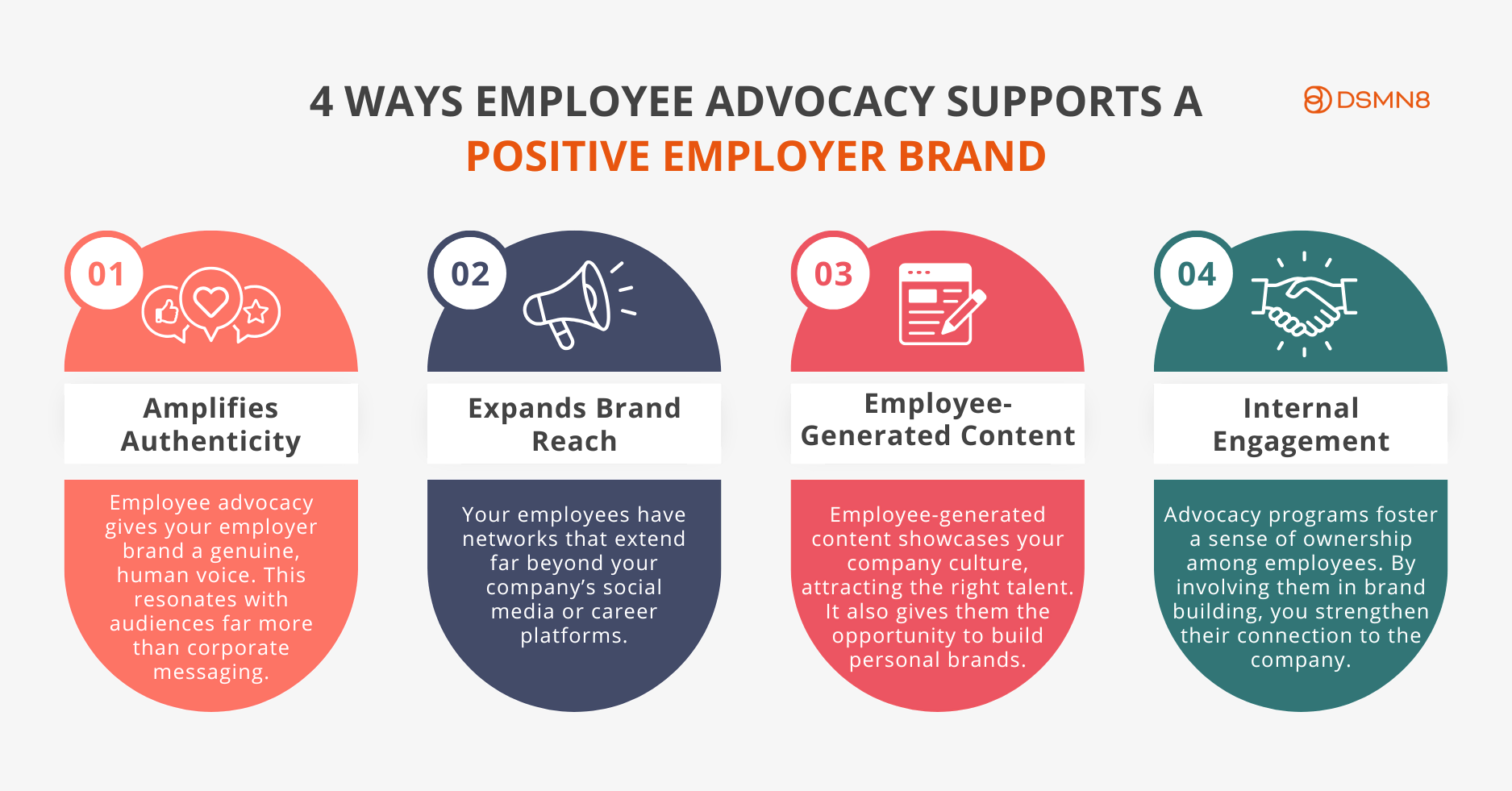
An employee advocacy program takes this even further. By creating and sharing content, employees aid talent acquisition through word-of-mouth referrals via their LinkedIn networks.
Remember that people trust people.
We’re all much more likely to trust and believe an employee’s story on social media if it comes from them rather than the company.
Social Media Today revealed that employee posts have 800% higher engagement rates than brands 🔥
DSMN8 enables your company to leverage this. We make it easy for employees to create, curate, share, and track content, all within one user-friendly platform.
Finally, don’t forget to use employee stories to establish a strong sense of community.
When leaders share stories of employee successes, they create a culture of recognition and appreciation.
This motivates current employees to continue contributing to the company’s success!
Here’s how DSMN8 client AkzoNobel does it:
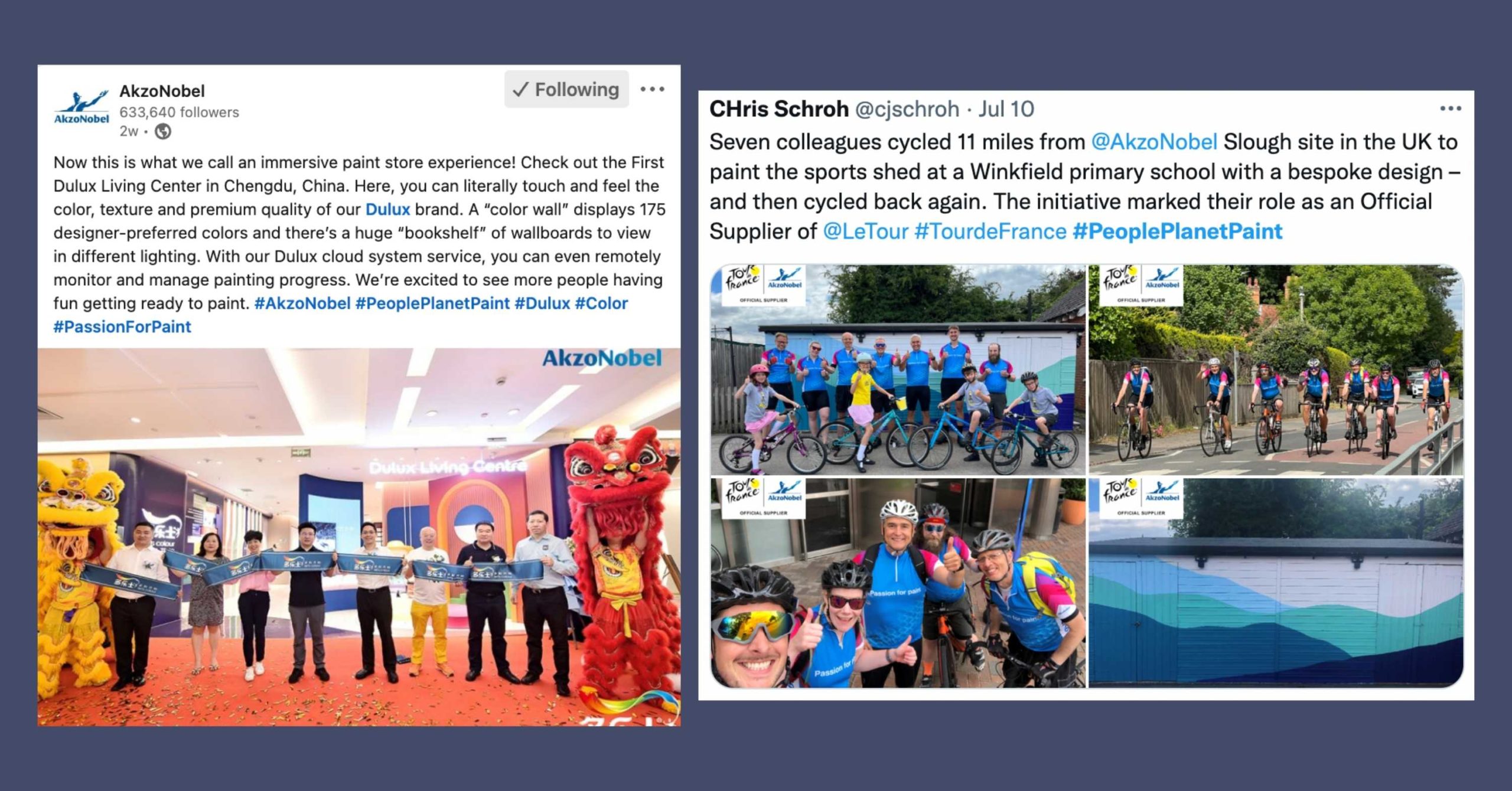
How to Measure the Impact of Employee Stories on Talent Acquisition
Measuring the impact of employee stories on talent acquisition efforts can be challenging, but several metrics provide insights into their effectiveness.
One metric to look at is the number of applications received from candidates who have engaged with employee stories. This can be tracked through applicant tracking systems, recruitment analytics tools, or through UTM links.
Another metric to consider is the quality of candidates who apply after engaging with employee stories. Do they fit with the company culture and align with company values? This can be assessed through candidate screening processes, interviews, or surveys.
Tracking internal metrics like employee engagement, retention, and referral rates also indicates the overall impact of employee stories.
Use your employee advocacy platform analytics to find out which employee stories are the most engaging.
With DSMN8, you can see how many employees share each piece of content received, how many clicks it got, and more.
This helps your employer branding and marketing teams see which employee-centered content works best on social media, allowing you to make informed decisions for your talent acquisition strategy.
Final Thoughts & Additional Resources
Showcasing real employee stories truly levels up your talent acquisition and employer branding strategy.
This approach results in a connected team working together to build a powerful employer brand.
Feature employee stories in your recruitment marketing campaigns, interviewing process, social media content, and, most importantly, via your employees with an employee advocacy platform.
You’ll be reaching top talent in no time.
Ready to get started with the #1 employee advocacy platform?
Wondering how active your team already is, and how this compares with your competitors?
More on Employer Branding & Talent Acquisition 👇
Emily Neal
SEO and Content Specialist at DSMN8. Emily has 10 years experience blogging, and is a pro at Pinterest Marketing, reaching 1 million monthly views. She’s all about empowering employees to grow their personal brands and become influencers.

